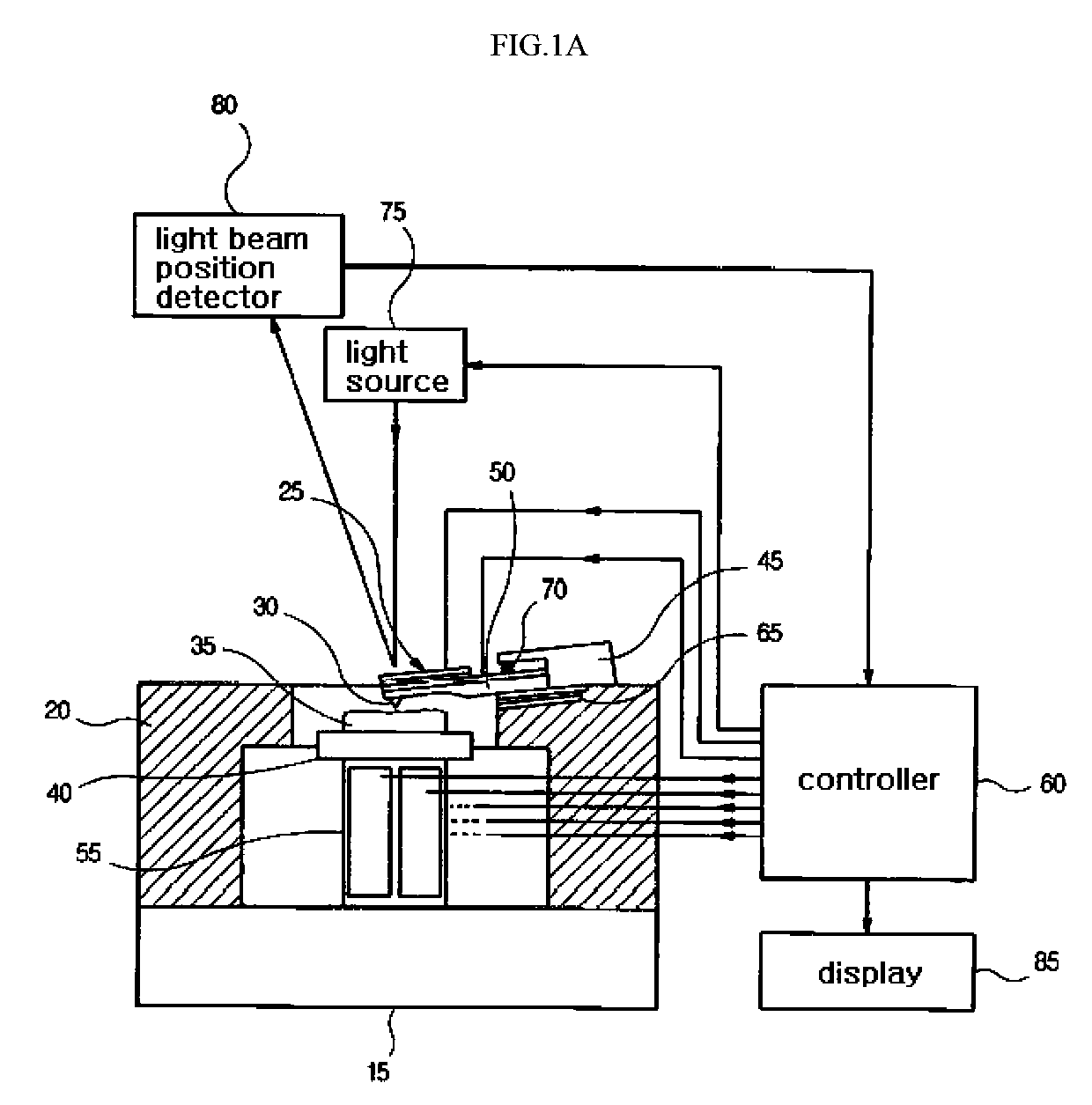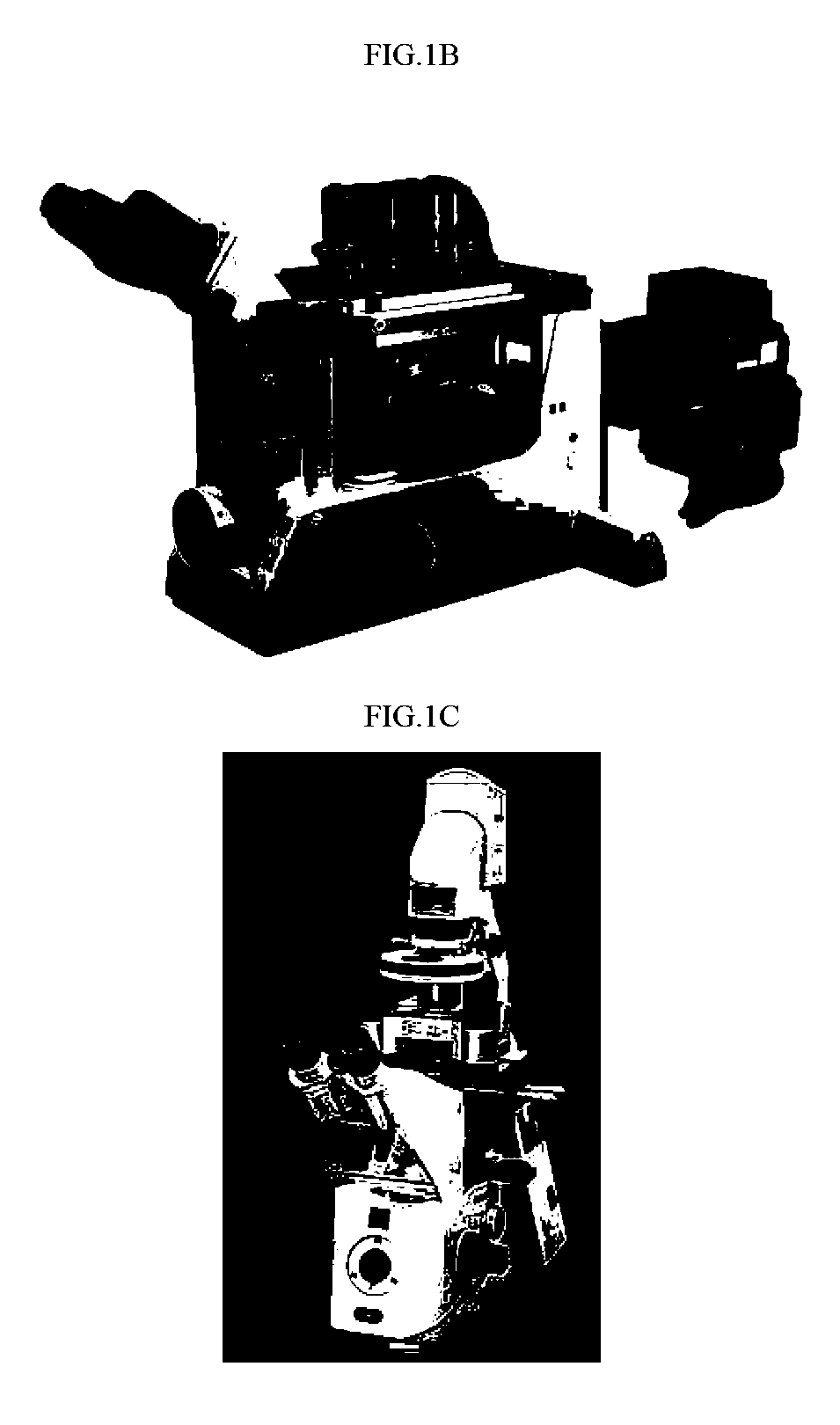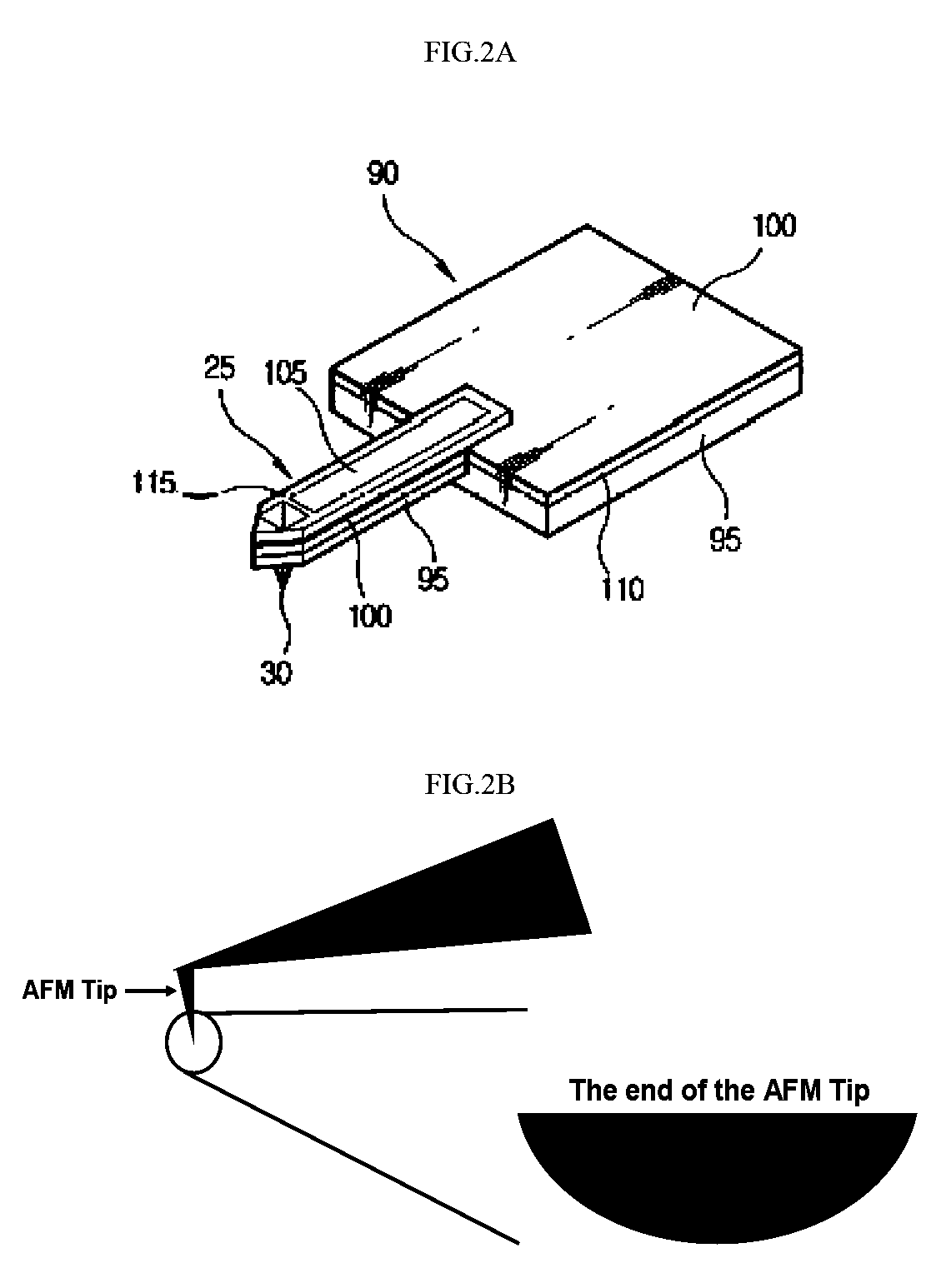Biomolecule interaction using atomic force microscope
a microscopy and microscope technology, applied in the field ofatomic force microscopy, can solve the problems of difficult to solve the problem of single molecular interaction, low recognition efficiency, and difficulty in identifying dna strands during studies at the single molecular level
- Summary
- Abstract
- Description
- Claims
- Application Information
AI Technical Summary
Problems solved by technology
Method used
Image
Examples
preparation examples
[0130]Numbering scheme is used for compounds throughout the Examples such as compound 1, compound 2, I, II, III, IV, V and so on. It is to be understood however, that the compound numbering scheme is consistent with and is confined to the particular Example section to which it is recited. For instance, compound 1 as recited in Example 2 may not necessarily be the same compound 1 as found in Example 3.
example 1
Methods For Making Microarray Using Size-Controlled Macromolecule
[0131]In Example 1, designations I, II, III, IV, and V refer to various compounds and intermediate compounds as shown in FIG. 2.
example 1.1
Materials
[0132]The silane coupling reagents, (3-glycidoxypropyl)methyldiethoxysilane (GPDES) and (3-aminopropyl)diethoxymethylsilane (APDES), were purchased from Gelest, Inc. and all other chemicals were of reagent grade from Sigma-Aldrich. Reaction solvents for the silylation are anhydrous ones in Sure / Seal bottles from Aldrich. All washing solvents for the substrates are of HPLC grade from Mallinckrodt Laboratory Chemicals. The UV grade fused silica plates (30 mm×10 mm×1.5 mm) were purchased from CVI Laser Corporation. The polished prime Si(100) wafers (dopant, phosphorus; resistivity, 1.5-2.1 Ω·cm) were purchased from MEMC Electronic Materials, Inc. Glass slides (2.5×7.5 cm) were purchased from Corning Co. All of the oligonucleotides were purchased from Metabion. Ultrapure water (18 M Ω / cm) was obtained from a Milli-Q purification system (Millipore).
PUM
| Property | Measurement | Unit |
|---|---|---|
| distance | aaaaa | aaaaa |
| retraction velocity | aaaaa | aaaaa |
| retraction velocity | aaaaa | aaaaa |
Abstract
Description
Claims
Application Information
 Login to view more
Login to view more - R&D Engineer
- R&D Manager
- IP Professional
- Industry Leading Data Capabilities
- Powerful AI technology
- Patent DNA Extraction
Browse by: Latest US Patents, China's latest patents, Technical Efficacy Thesaurus, Application Domain, Technology Topic.
© 2024 PatSnap. All rights reserved.Legal|Privacy policy|Modern Slavery Act Transparency Statement|Sitemap



